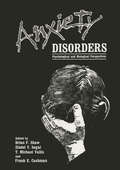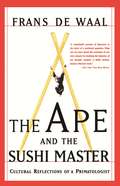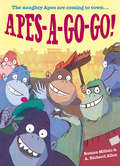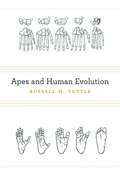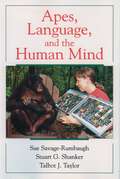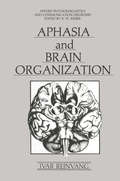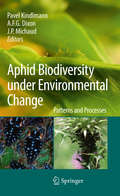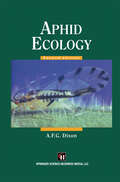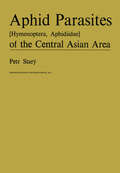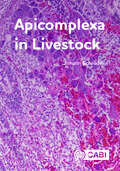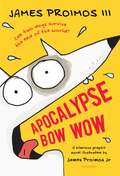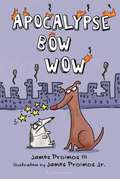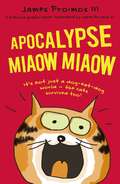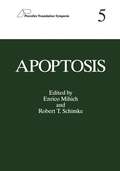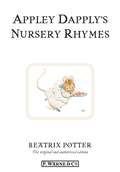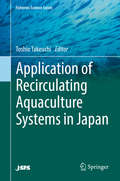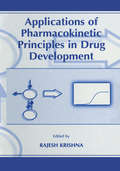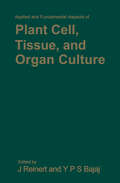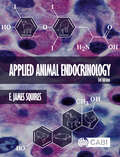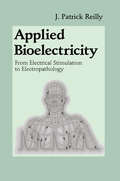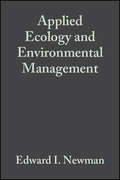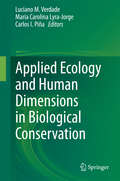- Table View
- List View
Anxiety Disorders: Psychological and Biological Perspectives
by Brian F. ShawAnxiety is one of those entltles which everyone "knows", but which ultimately resists simple objective description. The essence of the phenomenon is its subjectivity. True it has its well documented associated physiological events: the increased pulse rate and blood pressure, sweating, and so on, but each of these phenomena may also be part of physical exertion, fear, or even pleasurable excitement. They cannot fully define the sense of threat, danger, collapse, malignancy in greater or smaller amount, in greater or lesser locali sation, with more or less objective evidence for its validity that characterises the particular psychological pain we all recognize as anxiety. It is precisely the essential subjectivity of anxiety and its association with an enormous range of experience that makes it difficult to assign to it well-defined diagnostic labels of the kinds so carefully described by Dr. Spitzer in his chapter on classification. His chapter ranges from the extreme dread of "Panic Disorders", to the diffuse terror of the environment which used to be labelled "Agoraphobia" (and is still so called in the day to day pragmatic usage of many clinics) and is not assimilated to the class of phobias with the label "Social Phobias". He also addresses the "Simple Phobias" which are perhaps the most readily labelled of the many varieties of anxiety.
The Ape And The Sushi Master: Cultural Reflections Of A Primatologist
by Frans De WaalFrom the New York Times bestselling author of Mama's Last Hug and Are We Smart Enough to Know How Smart Animals Are?, a provocative argument that apes have created their own distinctive culturesIn The Ape and the Sushi Master, eminent primatologist Frans de Waal corrects our arrogant assumption that humans are the only creatures to have made the leap from the natural to the cultural domain. The book's title derives from an analogy de Waal draws between the way behavior is transmitted in ape society and the way sushi-making skills are passed down from sushi master to apprentice. Like the apprentice, young apes watch their group mates at close range, absorbing the methods and lessons of each of their elders' actions. Responses long thought to be instinctive are actually learned behavior, de Waal argues, and constitute ape culture. A delightful mix of intriguing anecdote, rigorous clinical study, adventurous field work, and fascinating speculation, The Ape and the Sushi Master shows that apes are not human caricatures but members of our extended family with their own resourcefulness and dignity.
Ape Skeleton (UEB uncontracted)
by Adrian FarnsworthThis page shows an image of an ape skeleton shown from the side, facing to the left and standing on all four legs.
Apes-a-Go-Go!
by Roman Milisic“Cuppa cocoa! Apes-a-go-go!” Watch out, the Great Apes have come to town, and that only means one thing… TROUBLE! A dynamic, slapstick picture book debut for Roman Milisic and A. Richard Allen.
Apes and Human Evolution
by Russell H. TuttleIn this masterwork, Russell H. Tuttle synthesizes a vast research literature in primate evolution and behavior to explain how apes and humans evolved in relation to one another, and why humans became a bipedal, tool-making, culture-inventing species distinct from other hominoids. Along the way, he refutes the theory that men are essentially killer apes--sophisticated but instinctively aggressive, destructive beings. Situating humans in a broad context, Tuttle musters evidence from morphology and recent fossil discoveries to reveal what early primates ate, where they slept, how they learned to walk upright, how brain and hand anatomy evolved simultaneously, and what else happened evolutionarily to cause humans to diverge from their closest relatives. Despite our genomic similarities with bonobos, chimpanzees, and gorillas, humans are unique among primates in occupying a symbolic niche of values and beliefs based on symbolically mediated cognitive processes. Although apes exhibit behaviors that strongly suggest they can think, salient elements of human culture--speech, mating proscriptions, kinship structures, and moral codes--are symbolic systems that are not manifest among apes. This encylopedic volume is both a milestone in primatological research and a critique of what is known and yet to be discovered about human and ape potential.
Apes and Human Evolution
by Russell H. TuttleIn this masterwork, Russell H. Tuttle synthesizes a vast research literature in primate evolution and behavior to explain how apes and humans evolved in relation to one another, and why humans became a bipedal, tool-making, culture-inventing species distinct from other hominoids. Along the way, he refutes the theory that men are essentially killer apes--sophisticated but instinctively aggressive, destructive beings. Situating humans in a broad context, Tuttle musters evidence from morphology and recent fossil discoveries to reveal what early primates ate, where they slept, how they learned to walk upright, how brain and hand anatomy evolved simultaneously, and what else happened evolutionarily to cause humans to diverge from their closest relatives. Despite our genomic similarities with bonobos, chimpanzees, and gorillas, humans are unique among primates in occupying a symbolic niche of values and beliefs based on symbolically mediated cognitive processes. Although apes exhibit behaviors that strongly suggest they can think, salient elements of human culture--speech, mating proscriptions, kinship structures, and moral codes--are symbolic systems that are not manifest among apes. This encylopedic volume is both a milestone in primatological research and a critique of what is known and yet to be discovered about human and ape potential.
Apes, Language, And The Human Mind
by Sue Savage-Rumbaugh Stuart G. Shanker Talbot J. TaylorCurrent primate research has yielded stunning results that not only threaten our underlying assumptions about the cognitive and communicative abilities of nonhuman primates, but also bring into question what it means to be human. At the forefront of this research, Sue Savage-Rumbaugh recently has achieved a scientific breakthrough of impressive proportions. Her work with Kanzi, a laboratory-reared bonobo, has led to Kanzi's acquisition of linguistic and cognitive skills similar to those of a two and a half year-old human child. Apes, Language, and the Human Mindskillfully combines a fascinating narrative of the Kanzi research with incisive critical analysis of the research's broader linguistic, psychological, and anthropological implications. The first part of the book provides a detailed, personal account of Kanzi's infancy, youth, and upbringing, while the second part addresses the theoretical, conceptual, and methodological issues raised by the Kanzi research. The authors discuss the challenge to the foundations of modern cognitive science presented by the Kanzi research; the methods by which we represent and evaluate the abilities of both primates and humans; and the implications which ape language research has for the study of the evolution of human language. Sure to be controversial, this exciting new volume offers a radical revision of the sciences of language and mind, and will be important reading for all those working in the fields of primatology, anthropology, linguistics, philosophy of mind, and cognitive and developmental psychology.
Apes, Language, and the Human Mind
by Sue Savage-Rumbaugh Stuart G. Shanker Talbot J. TaylorCurrent primate research has yielded stunning results that not only threaten our underlying assumptions about the cognitive and communicative abilities of nonhuman primates, but also bring into question what it means to be human. At the forefront of this research, Sue Savage-Rumbaugh recently has achieved a scientific breakthrough of impressive proportions. Her work with Kanzi, a laboratory-reared bonobo, has led to Kanzi's acquisition of linguistic and cognitive skills similar to those of a two and a half year-old human child. Apes, Language, and the Human Mind skillfully combines a fascinating narrative of the Kanzi research with incisive critical analysis of the research's broader linguistic, psychological, and anthropological implications. The first part of the book provides a detailed, personal account of Kanzi's infancy, youth, and upbringing, while the second part addresses the theoretical, conceptual, and methodological issues raised by the Kanzi research. The authors discuss the challenge to the foundations of modern cognitive science presented by the Kanzi research; the methods by which we represent and evaluate the abilities of both primates and humans; and the implications which ape language research has for the study of the evolution of human language. Sure to be controversial, this exciting new volume offers a radical revision of the sciences of language and mind, and will be important reading for all those working in the fields of primatology, anthropology, linguistics, philosophy of mind, and cognitive and developmental psychology.
Aphasia and Brain Organization (Applied Psycholinguistics and Communication Disorders)
by Ivar ReinvangThis book presents the work on aphasia coming out of the Institute for Aphasia and Stroke in Norway during its 10 years of existence. Rather than reviewing previously presented work, it was my desire to give a unified analysis and discussion of our accumulated data. The empirical basis for the analysis is a fairly large group (249 patients) investigated with a standard, comprehensive set of procedures. Tests of language functions must be developed anew for each language, but comparison of my findings with other recent compre hensive studies of aphasia is faciliated by close parallels in test meth ods (Chapter 2). The classification system used is currently the most accepted neurological system, but I have operationalized it for research purposes (Chapter 3). The analyses presented are based on the view that aphasia is an aspect of a multidimensional disturbance of brain function. Find ings of associated disturbances and variations in the aphasic condition over time have been dismissed by some as irrelevant to the study of aphasia as a language deficit. My view is that this rich and complex set of findings gives important clues to the organization of brain functions in humans. I present analyses of the relationship of aphasia to neuropsychological disorders in conceptual organization, memory, visuospatial abilities and apraxia (Chapters 4, 5, and 6), and I study the variations with time of the aphasic condition (Chapter 8).
Aphid Biodiversity under Environmental Change: Patterns and Processes
by Pavel Kindlmann A.F.G. Dixon J. P. MichaudThis book presents the results of recent research on aphid population dynamics and ecology relevant to current environmental changes resulting from global wa- ing. It incorporates a selection of the contributions presented at the International Symposium on Aphids in Fremantle, Australia, in October 2005, plus some ad- tional invited chapters. The objective was to incorporate the major issues in the ?eld and simultaneously create a closely interrelated and integrated volume. The ?rst chapter sets the scene. Kindlmann and Dixon present a critical review of existing models of aphid population dynamics, examine the biological assumptions that are incorporated in the models and present one of the latest models of aphid metapopulation dynamics. They conclude that natural enemies are unlikely to affect aphid population dynamics late in a season, but in some years may have an effect very early in the season, when aphid colonies are still small and predators might be able to reduce the numbers of colonies. The question, whether aphids will move to different locations, adapt to the change in conditions in their current habitat or go extinct is discussed by Ameixa. She concludes that the distributions of aphids are most likely to change, with the distribution of each species moving globally as their preferred habitat moves in response to changes in the climate, which may be more dif?cult than in the past because of habitat fragmentation and habitat loss.
Aphid Ecology An optimization approach
by A.F.G. DixonThis second edition covers the evolution of aphids and their development in relation to specific plants, thoroughly revised and expanded since the first highly successful edition. Increasing knowledge of aphids has revealed that they are ideal organisms to use when studying many topical ecological issues.
Aphid Parasites (Hymenoptera, Aphidiidae) of the Central Asian Area
by P. StarýAn analysis of the particular topics in biological control programmes all over the world indicates an increased interest in the utilization of aphid parasites. Besides the so-called traditional biological control of introduced aphids, there appears a situation which could perhaps be called a renaissance of biocontrol, i. e. the utilization of biotic agents against insecticide-resistant populations of aphid pests. The rapid increase in the amount of information as well as the necessity of syntheti cal papers are the well-known features in today's entomology. This requirement is much more topical in the groups where brief summarized information is needed for research workers in applied branches. The author has been well aware of all these difficulties and requirements owing to his own experience both in basic and applied research. Several years ago he decided to summarize our knowledge on the aphid parasites of the world by elaborating synthetical studies on the particular zoogeographical areas. These papers have been intended to represent annotated reviews of the parasite fauna, distribution, biologies and utilization in aphid pest management, with keys to genera and species, hos- parasite catalogue, and a list of references added. Naturally, these studies are only relatively updated, with respect to a certain deadline from which the research may be further continued. At present, the Far East Asian and the Mediterranean areas have been reviewed in this or at least in a similar manner.
Apicomplexa in Livestock
by Johann SchröderThe Apicomplexa is a globally prevalent group of parasitic protozoa that cause disease, from malaria in humans to livestock diseases such as coccidiosis, babesiosis (Red Water, Tick Fever) and East Coast Fever. With significant economic impacts, a number of Apicomplexa are also zoonotic, leading to grave potential public health consequences. Infection prevention efforts by immunisation or management of arthropod vector infestation have not been universally successful, and can have knock-on effects such as pollution of the environment and human food chain, and development of insecticidal or acaricidal resistance. This book highlights the similarities and differences between the various Apicomplexa infections, identifying those of greatest significance and suggesting sustainable approaches to better manage their impact on livestock productivity. The book: Reviews Australian livestock as a case study, but highlights global applications, biosecurity concerns and lessons learned; Covers Apicomplexa-caused disease across cattle, pigs, poultry and sheep; Considers human health and environmental impacts, and how sustainable management methods can better outcomes for all. Suitable for researchers and students of veterinary parasitology and related disciplines, this book is a valuable resource covering this important set of parasites.
Apocalypse Bow Wow
by James ProimosThe end is nigh. Apocalypse has dawned. Everyone has gone ... everyone, that is, except for two dogs. Unbeknownst to Brownie and Apollo the world has turned to utter chaos. It is only when dinner time comes and goes, that the pair slowly begin to realise that their owners might be Gone For Good.There's only one option - leave the comfort of their sofa and head into what's left of the world. With only their wits about them, Brownie and Apollo must find a way to survive. It's a dog-eat-dog world now!This hilarious spin on dystopia is perfect for middle graders, dog lovers and those who want to be thoroughly entertained. Perfect for fans of Wimpy Kid and graphic novels, this has been illustrated by the same illustrator of Suzanne Collins' picture book, Year of the Jungle, which was a New York Times Editors' Choice.
Apocalypse Bow Wow
by James ProimosThe end has come. The world is in shambles. Everyone is gone . . . except for the dogs! Brownie and Apollo are two dogs living in bliss with a big, comfy couch to laze on. But unbeknownst to them and seemingly overnight, the world has turned to utter chaos. What they do know is their owners are MIA, they are starting to get on each other's nerves, and it's dinner time. What has happened? Who will feed them? What if their people are gone for good?!With bellies rumbling, Brownie and Apollo decide to set out into the wide world, where they discover other pets and stray animals who have been left behind. But not everyone is man's best friend. It's a dog-eat-dog world now! With the help of a friendly neighborhood police dog and a small but mighty side-kick tick, Apollo and Brownie must figure out how to survive these dark times and locate their ultimate goal: dinner!
Apocalypse Miaow Miaow
by James ProimosThe end is nigh. Apocalypse has dawned. Everyone has gone ... except for our heroes: Brownie, Apollo and their ragtag group of strays.Having raided a supermarket and defeated some very mean mutts, our heroes find themselves out of food. So when they hear a rumour of a Twonkies factory, and all the Twonkies they could ever eat, they think they've won the Twonkie jackpot. The only catch is the cat guarding the factory – and this 'cat' is MUCH bigger than any feline they've ever met. Can our heroes defeat their foe and claim the Twonkies for themselves? More irreverent, dog-filled apocalyptic adventures. With laughs on every page, this brilliant graphic novel will charm everyone from the most reluctant reader to the coolest of cats (humans and animals alike)!
Apoptosis (Pezcoller Foundation Symposia #5)
by Enrico Mihich Robert T. SchimkeThe fifth Annual Pezcoller Symposium entitled, Apoptosis, was held in Trento, Italy, June 9-1I, 1993 and was focused on the specific phenomena leading to Programmed Cell Death (PCD) or Apoptosis, and the mechanisms involved. With presentations at the cutting edge of progress and stimulating discussions, this Symposium addressed the genetics and molecular mechanisms determining PCD and the role of this suicidal process in cancer and the immune system. The functions of pS3, c myc and bel 2 in affecting apoptosis in different cell types and the role of ions and intracellular pH changes and that of intranuelear endonueleases are given particular emphasis as are the effects of anticancer agents, hormone imbalances and growth factors. The role of pS3, a tumor suppressor gene, in inducing PCD is discussed in detail as pertinent to hematological and non-hernatological tumors. The requirement of pS3 for the induction ofapoptosis by ionizing radiation or adenovirus oncoproteins is outlined. Decision points during the cell cyele affecting the cascade ofevents leading to PCD are discussed as is their role as "switches" under the control of c-myc and bel-2 proteins or the influence of cyele specific drugs. The concurrent requirement of multiple signals in determining apoptosis is emphasized. The examples of the role of PCD in the regulation of hematopoiesis, and in the generation of antigen-specific immune repertoire are illustrated.
Appley Dapply's Nursery Rhymes
by Beatrix PotterThis original, authorised version has been lovingly recreated electronically for the first time, with reproductions of Potter's unmistakeable artwork optimised for use on colour devices such as the iPad. Beatrix Potter gathered material for a book of rhymes over many years. In 1917, when her publisher was in financial difficulties and needed her help, she suggested that Appley Dapply's Nursery Rhymes could be brought out quickly, using her existing collection of rhymes and drawings. The fact that the illustrations were painted at different times explains why the style occasionally varies.Appley Dapply's Nursery Rhymes is number 22 in Beatrix Potter's series of 23 little books, the titles of which are as follows:1 The Tale of Peter Rabbit2 The Tale of Squirrel Nutkin3 The Tailor of Gloucester4 The Tale of Benjamin Bunny5 The Tale of Two Bad Mice6 The Tale of Mrs. Tiggy-Winkle7 The Tale of Mr. Jeremy Fisher8 The Tale of Tom Kitten9 The Tale of Jemima Puddle-Duck10 The Tale of the Flopsy Bunnies11 The Tale of Mrs. Tittlemouse12 The Tale of Timmy Tiptoes13 The Tale of Johnny Town-Mouse 14 The Tale of Mr. Tod15 The Tale of Pigling Bland16 The Tale of Samuel Whiskers17 The Tale of The Pie and the Patty-Pan18 The Tale of Ginger and Pickles19 The Tale of Little Pig Robinson20 The Story of a Fierce Bad Rabbit21 The Story of Miss Moppet22 Appley Dapply's Nursery Rhymes23 Cecily Parsley's Nursery Rhymes
Application of Recirculating Aquaculture Systems in Japan (Fisheries Science Series)
by Toshio TakeuchiThis is the first English book to address the current development of closed recirculating aquaculture systems (cRASs) in Japan, and its implications for industry in the near future. It offers an introduction to the topic and discusses the industrial application of cRASs. Around Europe, cRASs using freshwater have been developed, but to date there is little information about cRASs using the saltwater. As such, the book introduces the technical development of cRASs using the saltwater in Japan and describes measures necessary for their industrialization. It also discusses in detail various species, e.g., flounder, pejerrey, kuruma shrimp, white shrimp and abalone, which have been raised in cRASs. Furthermore, it presents wide topics concerning the technological development of aquariums, an area in which progressive Japanese techniques dominate. Lastly, the book also examines CERAS and poly-culture in Japan.The book is a valuable resource for a wide readership, such as local government officers, energy-industry staff, maintenance and system engineers, as well as those from the construction, agriculture and fishery industries.
Applications of Pharmacokinetic Principles in Drug Development
by Rajesh KrishnaThis volume is an important advancement in the application ofpharmacokinetic (PK) and pharmacodynamic (PO) principles to . drug development. The series of topics presented deal with the application of these tools to everyday decisions that a pharmaceutical scientist encounters. The ability to integrate these topics using PK and PO methods has optimized drug development pathways in the clinic. New technologies in the areas of in vitro assays that are more predictive of human absorption and metabolism and advancement in bioanalytical assays are leading the way to minimize drug failures in later, more expensive clinical development programs. of Pharmacokinetics and pharmacodynamics have become an important component understanding the drug action on the body and is becoming increasingly important in drug labeling due to it's potential for predicting drug behavior in populations that may be difficult to study in adequate numbers during drug development. The ability to correlate drug exposure to effect and model it during the drug development value chain provides valuable insight into optimizing the next steps to derive maximum information from each study. These principles and modeling techniques have resulted in an expanded and integrated view of PK and PO and have led to the expectations that we may be able to optimally design clinical trials and eventually lead us to identifying the optimal therapy for the patient, while minimizing cost and speeding up drug development. There is wide utility for the book both as a text and as a reference.
Applied and Fundamental Aspects of Plant Cell, Tissue, and Organ Culture
by Jakob Reinert Yashpal S. BajajProgress in the field of plant cell and tissue culture has made this area of research one of the most dynamic and promising not only in plant physiology, cell biology and genetics but also in agriculture, forestry, horticulture and industry. Studies with plant cell cultures clearly have bearing upon a variety of problems as yet unsolved in basic and applied research. This was the compelling reason for assembling such a comprehensive source of information to stimulate students, teachers, and research workers. This book comprises 34 articles on regeneration of plants, vegetative propagation and cloning; haploids; cytology, cytogenetics and plant breeding; protoplasts, somatic hybridization and genetic engineering; plant pathology; secondary products and a chapter on isoenzymes, radiobiology, and cryobiology of plant cells. Particular attention has been paid to modern , fast-growing and fascinating disciplines - e.g. the induction of haploids, somatic hybridization and genetic manipulation by protoplast culture, which possess an enormous potential for plant improvement.
Applied Animal Endocrinology
by E. James SquiresThis book explains the role of hormones in improving and monitoring the production, performance, reproduction, behaviour and health of livestock animals, focusing on cattle, pigs, sheep, horses, poultry and fish. Beginning with the principles of endocrinology and the methods to study endocrine systems, it then covers the different endocrine systems that affect different aspects of animal production and describes how these systems can be manipulated or monitored to advantage. The mechanism of action is covered, and common mechanisms and themes highlighted in order to understand potential methods for altering these systems, and stimulate ideas for the development of new methods. A refreshed, updated resource that highlights new areas of endocrinology with applications in commercial animals, additions to this new edition include: - information on G protein receptors, function of CREB, methods for identification of DNA regulatory sequences and DNA binding proteins, circadian rhythm and the biological clock; - expanded coverage of in vitro models to include 3D cell culture and organ-on-a-chip; - new knowledge on gene editing, antibody production, hormone delivery methods and DNA cloning and sequencing methods; - the role of the gut microbiome, as well as effects of antibiotics and antimicrobials; - skin as an endocrine organ and related information on wool production and endocrine defleecing; - updated information on protocols for assessing endocrine disruptor chemicals. An invaluable text for students of animal science and veterinary medicine, this book also provides a useful resource for those in academia and industry interested in applications of endocrinology in animal production systems.
Applied Bioelectricity: From Electrical Stimulation to Electropathology
by J. Patrick ReillyElectric currents and electromagnetic fields have been applied to biological systems, particularly humans, with both therapeutic and pathological results. This text discusses biological responses to electric currents and electromagnetic fields, including medical applications and shock hazards. It covers fundamental physical and engineering principles of responses to short-term electrical exposure and emphasises human reactions, although animal responses are considered as well, and the treatment covers reactions from the just-detectable to the clearly detrimental. An important new chapter discusses standards for human exposure to electromagnetic fields and electric current and demonstrates how these standards have been developed using the principles treated in earlier chapters.
Applied Ecology and Environmental Management
by Edward I. NewmanThis book explains ways that ecological science can be applied to solving some of the most crucial problems facing our world today. A major theme is how resources can be effectively managed and exploited in as near a sustainable manner as possible. The author draws together, in a single volume, major topics in environmental and resource management that have traditionally been dispersed among several different books. Applied Ecology starts with an analysis of our planet's basic natural resources - energy, water and soil; it moves on to the management of biological resources - fish, grazing lands and forests, and then to pest control and pollution. Finally, the book tackles conservation and management of wild species and the restoration of ecological communities. The second edition of this text has been radically redesigned and rewritten. Each chapter starts with a list of questions, setting out the various fundamental problems to be considered. Interwoven with these practical problems is a clear explanation of the underlying basic science - ecology - studied at scales ranging from global, landscape and ecosystem, down to the population and individual (and even their physiology and genetics). The science is illustrated by examples from every major geographic area of the world. This book is aimed primarily at undergraduate students taking courses in applied ecology, environmental science, environmental management and natural resources management. The author has extensive experience as a university teacher. Like his lectures, this book is scientifically rigorous yet clear and easy to understand. Draws together major topics in environmental and resource management, usually dispersed over many separate books. Questions, summaries and clearly structured chapters enhance usability. Emphasis on clarity and accessibility. Based on a proven and successful course.
Applied Ecology and Human Dimensions in Biological Conservation
by Luciano M. Verdade Maria Carolina Lyra-Jorge Carlos I. PiñaThis book provides both the conceptual basis and technological tools that are necessary to identify and solve problems related to biodiversity governance. The authors discuss intriguing evolutionary questions, which involve the sometimes surprising adaptive capacity of certain organisms to dwell in altered and/or changing environments that apparently lost most of their structure and functionality. Space and time heterogeneities are considered in order to understand the patterns of distribution and abundance of species and the various processes that mold them. The book also discusses at which level—from genes to the landscape, including individuals, populations, communities, and ecosystems—men should intervene in nature in order to prevent the loss of biodiversity.
